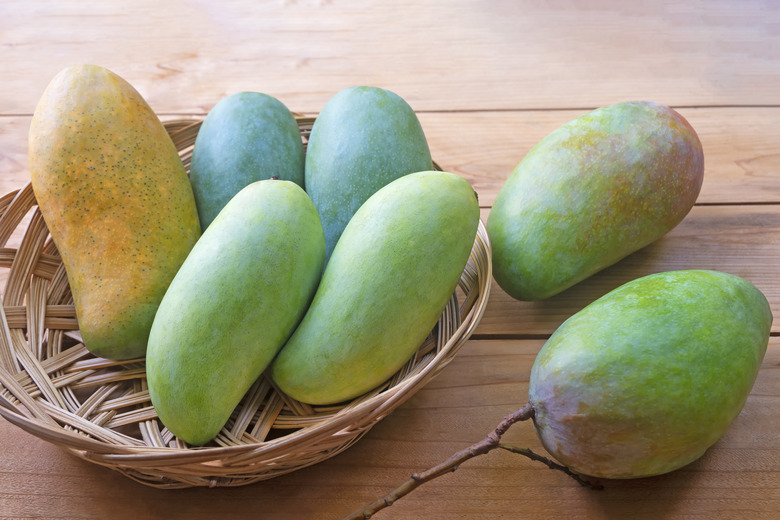How To Ripen A Green Mango
The transformation of a hard, green mango into a succulent, warm yellow fruit with that gorgeous red blush is a "wow" moment in nature. And the scent! A perfectly ripe mango sitting on your kitchen counter can permeate the entire room. Commercially, mangos are harvested when they are unripe, green, and hard. To help that transformation along, put your mango in a paper bag.
How to Tell if a Mango Is Ripe
How to Tell if a Mango Is Ripe
Mangos (Mangifera indica L.) found in supermarkets or specialty markets in the United States may be unripe, although they should have at least a small blush of warm yellow color; otherwise, they were harvested too early. In California, mangos growing in the warmer interior areas flower in January and ripen in June. Those growing closer to the coast flower later in the year in April and ripen by October.
Mangos naturally start the ripening process after harvest, so you can just put them on your kitchen counter and wait. The characteristic yellow-orange color, often accompanied by a reddish blush, depending on the variety, will tell you they are ripe — although some varieties do remain green even when ripe, so know your cultivar.
They will begin to give off that lovely characteristic fruity scent, and their consistency should be like that of a peach: slightly soft to the touch but not mushy. Another indicator of ripeness is the shape of the "beak," or the hooked area just below the stem. It should be slightly rounded.
Ripening a Mango Faster
Ripening a Mango Faster
There are two primary ways that experts recommend to speed up the ripening of a mango. First, you can place the mango stem-down on a tray at room temperature. To avoid it drying out, cover it with a damp cloth.
Another method is to put it in a paper bag, again at room temperature. The paper bag method is probably familiar to you, as it is also the method recommended for ripening bananas and avocados because it helps release ethylene. If you don't have a paper bag, wrap the fruit in newspaper. Speaking of ethylene, if you have bananas, put your mangos next to the bananas on the counter or even add the bananas to the bag. Bananas are known for producing ethylene at a very fast rate.
Once ripe, put the fruit in the fridge to avoid overripening. You can store mangos in the fridge for about five days at this point, but it's unlikely they'll last that long because every time you open the fridge, their beautiful color will tempt you. You can also peel them and cube them and put them in the freezer for up to six months.
Mango Fruit Harvest
Mango Fruit Harvest
A grafted mango tree generally fruits about two to four years after being planted. If you have a mango tree grown from seed, which is less likely, it will take closer to eight or 10 years to fruit.
After the mango flowers appear, the fruit should mature in about 100 to 150 days. Although most commercial growers harvest the fruit while still green, it must at least display some blush of yellow. Home gardeners have the luxury of waiting until the fruit is almost fully ripe on the tree because they are not concerned with transport.
